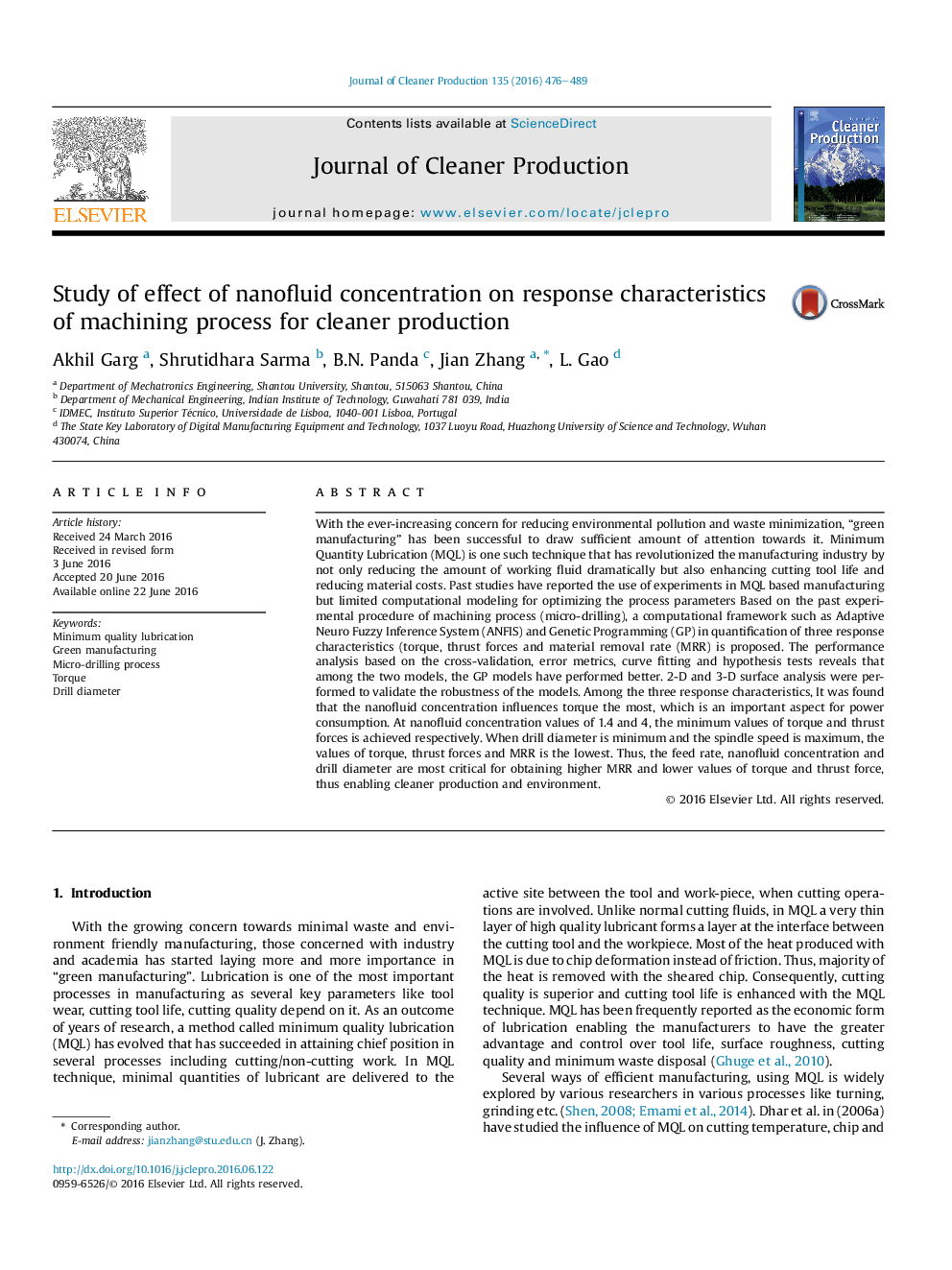| کد مقاله | کد نشریه | سال انتشار | مقاله انگلیسی | نسخه تمام متن |
|---|---|---|---|---|
| 8101196 | 1522115 | 2016 | 14 صفحه PDF | دانلود رایگان |
عنوان انگلیسی مقاله ISI
Study of effect of nanofluid concentration on response characteristics of machining process for cleaner production
ترجمه فارسی عنوان
بررسی اثر غلظت نانو فلوئید بر خصوصیات پاسخ فرایند ماشینکاری برای تولید پاک
دانلود مقاله + سفارش ترجمه
دانلود مقاله ISI انگلیسی
رایگان برای ایرانیان
کلمات کلیدی
حداقل کیفیت روانکاری، تولید سبز، فرایند میکرو حفاری، گشتاور، قطر مته
موضوعات مرتبط
مهندسی و علوم پایه
مهندسی انرژی
انرژی های تجدید پذیر، توسعه پایدار و محیط زیست
چکیده انگلیسی
With the ever-increasing concern for reducing environmental pollution and waste minimization, “green manufacturing” has been successful to draw sufficient amount of attention towards it. Minimum Quantity Lubrication (MQL) is one such technique that has revolutionized the manufacturing industry by not only reducing the amount of working fluid dramatically but also enhancing cutting tool life and reducing material costs. Past studies have reported the use of experiments in MQL based manufacturing but limited computational modeling for optimizing the process parameters Based on the past experimental procedure of machining process (micro-drilling), a computational framework such as Adaptive Neuro Fuzzy Inference System (ANFIS) and Genetic Programming (GP) in quantification of three response characteristics (torque, thrust forces and material removal rate (MRR) is proposed. The performance analysis based on the cross-validation, error metrics, curve fitting and hypothesis tests reveals that among the two models, the GP models have performed better. 2-D and 3-D surface analysis were performed to validate the robustness of the models. Among the three response characteristics, It was found that the nanofluid concentration influences torque the most, which is an important aspect for power consumption. At nanofluid concentration values of 1.4 and 4, the minimum values of torque and thrust forces is achieved respectively. When drill diameter is minimum and the spindle speed is maximum, the values of torque, thrust forces and MRR is the lowest. Thus, the feed rate, nanofluid concentration and drill diameter are most critical for obtaining higher MRR and lower values of torque and thrust force, thus enabling cleaner production and environment.
ناشر
Database: Elsevier - ScienceDirect (ساینس دایرکت)
Journal: Journal of Cleaner Production - Volume 135, 1 November 2016, Pages 476-489
Journal: Journal of Cleaner Production - Volume 135, 1 November 2016, Pages 476-489
نویسندگان
Akhil Garg, Shrutidhara Sarma, B.N. Panda, Jian Zhang, L. Gao,
